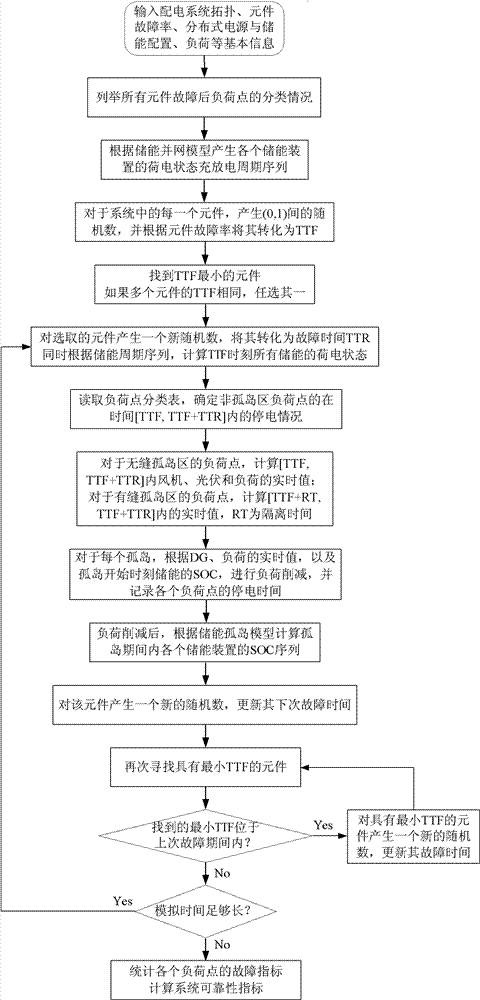Method for estimating reliability of electric distribution system containing distributive wind power, photovoltaic and energy storage devices
A power distribution system, distributed technology, applied in the direction of photovoltaic power generation, climate sustainability, electrical components, etc., can solve the problems of inability to evaluate power supply reliability of power distribution system, not taking into account energy storage devices, etc., to avoid repeated analysis , the effect of improving computational efficiency
- Summary
- Abstract
- Description
- Claims
- Application Information
AI Technical Summary
Problems solved by technology
Method used
Image
Examples
Embodiment Construction
[0058] The present invention will be described in detail below in conjunction with the accompanying drawings and embodiments. The flow chart of the evaluation method of the present invention is as figure 2 As shown, due to the wide variety of energy storage devices, the energy storage involved in this method is currently the most popular energy storage device—battery. The present invention mainly comprises the following steps:
[0059] (1) Collect and input basic information such as the topology of the power distribution system, the failure rate and repair rate of each main component of the system, the system load characteristics, the configuration of distributed power sources and energy storage devices, etc.
[0060] (2) Analyze the impact of all components of the system on the load point after failure, and form a classification list of the failure consequences of the load point.
[0061] (3) According to the energy storage grid-connected model, the charge and discharge cy...
PUM
 Login to View More
Login to View More Abstract
Description
Claims
Application Information
 Login to View More
Login to View More - R&D
- Intellectual Property
- Life Sciences
- Materials
- Tech Scout
- Unparalleled Data Quality
- Higher Quality Content
- 60% Fewer Hallucinations
Browse by: Latest US Patents, China's latest patents, Technical Efficacy Thesaurus, Application Domain, Technology Topic, Popular Technical Reports.
© 2025 PatSnap. All rights reserved.Legal|Privacy policy|Modern Slavery Act Transparency Statement|Sitemap|About US| Contact US: help@patsnap.com



